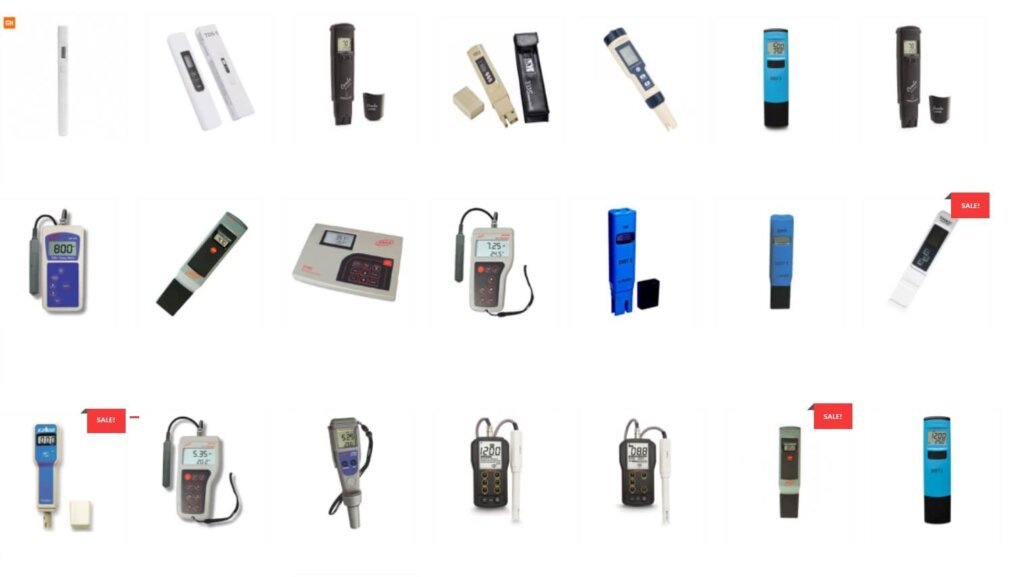- Water Testing Meters
- Anemometer
- Length & Distance Meter
- Multimeter & Clamp Meter
- Light and Sound Meter
- Slide Calipers & Screw Gauge
- Thermometer & Hygrometer
- Milk Testing Meters
- Paper, Grain & Wood Testers
- Stopwatch & Timers
- Soil Testing Meters
- Refractometers & Analyzer
- Magnetic Compass
- Tachometer & Megger
- Thickness & Dia-Meters
- Other Meter And Accessories
The Importance of Using a Lactometer in Dairy Industry Quality Control

In the dairy industry, ensuring the quality and purity of milk is of utmost importance. One essential tool that plays a crucial role in quality control is the lactometer. A lactometer is a simple device used to measure the density or specific gravity of milk, which in turn helps determine its composition and potential adulteration. The use of lactometers in the dairy industry, particularly in countries like Bangladesh, has become a standard practice to ensure consumer safety and promote fair business practices. This article explores the importance of using a lactometer in dairy industry quality control, including its benefits, applications, and the availability of lactometers in Bangladesh. Understanding the significance of this tool is vital for both dairy industry professionals and consumers alike.

The role of quality control in the dairy industry
Quality control plays a vital role in the dairy industry, as it ensures that only safe and high-quality products reach consumers. By implementing rigorous quality control measures, dairy companies can maintain their reputation and build trust with consumers. One of the key components of quality control is the use of a lactometer.
A lactometer helps to determine the density of milk, which is directly linked to its composition and potential adulteration. By measuring the specific gravity, dairy farmers and processors can assess the quality of their milk and identify any potential issues that may affect its purity and nutritional value.
In addition to monitoring the milk’s composition, lactometers also help in detecting adulteration, such as the addition of water or other contaminants. This is particularly important in countries like Bangladesh, where milk adulteration is a significant concern.
Using a lactometer ensures that only milk of the highest quality is delivered to consumers, promoting fair business practices and protecting consumer health. It serves as a valuable tool in the overall quality control process and should be a standard practice in the dairy industry.
The significance of measuring milk composition
Measuring the composition of milk is crucial in ensuring the quality and safety of dairy products. By analyzing the various components present in milk, such as fat, protein, lactose, and solids, dairy farmers and processors can not only assess the nutritional value of their products but also ensure that they meet regulatory standards.
The lactometer, in conjunction with other testing methods, allows for accurate measurement of the milk’s composition. By understanding and monitoring the levels of different components, dairy companies can ensure consistent product quality and identify any variations that may indicate potential issues in the milk production process.
Furthermore, measuring milk composition is essential for product labeling and consumer transparency. Consumers have the right to know what they are consuming, and accurate labeling helps build trust and confidence in dairy products.
In conclusion, by using a lactometer to measure milk composition, dairy companies can guarantee the consistency and safety of their products. This enables them to meet regulatory requirements, provide accurate product information to consumers, and maintain the reputation of the dairy industry as a whole.
The lactometer: a powerful tool in quality control
In the dairy industry, the lactometer is a powerful tool that plays a crucial role in quality control. By accurately measuring the composition of milk, the lactometer helps dairy farmers and processors ensure that their products meet the highest standards of quality and safety.
One of the key benefits of using a lactometer is its ability to determine the fat content of milk. This information is vital for dairy companies to produce a range of products with consistent fat levels, such as whole milk, low-fat milk, and cream. By precisely measuring the fat content, the lactometer allows for accurate product labeling and ensures that consumers are receiving the desired fat content in their dairy products.
Additionally, the lactometer assists in monitoring the protein content of milk. Protein is an essential component of dairy products, contributing to their nutritional value and texture. By analyzing the protein levels, dairy companies can ensure that their products meet both regulatory requirements and consumer expectations regarding protein content.
Furthermore, the lactometer provides valuable data on the amount of lactose and solids present in milk. This information is crucial in the production of lactose-free products and helps dairy companies cater to consumers with lactose intolerance.
In conclusion, the lactometer is an indispensable tool in the quality control process of the dairy industry. Its ability to accurately measure the composition of milk enables dairy companies to maintain consistent product quality, meet regulatory requirements, and cater to consumer needs and preferences. By utilizing the lactometer effectively, dairy companies can ensure the safety, transparency, and reputation of their products in the market.
How to use a lactometer properly
Using a lactometer properly is essential to obtain accurate results and ensure the quality of dairy products. Here are some guidelines on how to use a lactometer effectively:
1. Calibrate the lactometer: Before each use, it is important to calibrate the lactometer. This ensures that the readings are accurate and reliable. Follow the manufacturer’s instructions to calibrate the lactometer properly.
2. Collect a representative milk sample: Take a sample of milk from the bulk tank or container that represents the entire batch. Ensure that the sample is well-mixed to obtain an accurate representation of the milk composition.
3. Prepare the lactometer: Clean the lactometer thoroughly using a gentle detergent and warm water. Rinse it well to remove any soap residue. Ensure that the lactometer is dry before use.
4. Insert the lactometer into the milk sample: Gently place the lactometer into the milk sample, making sure that it is fully submerged. Avoid touching the sides of the container to prevent any interference with the reading.
5. Record the lactometer reading: Allow the lactometer to stabilize for a few minutes. Make sure the lactometer is floating freely and not touching the sides or bottom of the container. Read and record the lactometer’s position on the scale at the meniscus level.
6. Interpret the lactometer reading: Refer to the lactometer’s calibration chart or manual to determine the milk composition based on the recorded reading. It will provide information on the fat, protein, lactose, and solids content of the milk.
By following these steps, dairy farmers and processors can effectively utilize the lactometer to monitor and control the quality of their dairy products. Regular use of the lactometer ensures consistent standards, regulatory compliance, and customer satisfaction in the dairy industry.

Benefits and limitations of using a lactometer in dairy industry quality control
Benefits and limitations of using a lactometer in dairy industry quality control
While the lactometer is an invaluable tool in dairy industry quality control, it is important to be aware of its benefits and potential limitations. Understanding these will allow dairy farmers and processors to make the most out of this device.
One of the primary benefits of using a lactometer is its ability to provide quick and convenient measurements of milk composition. By accurately determining the fat, protein, lactose, and solids content, farmers and processors can ensure the quality and consistency of their dairy products.
Additionally, using a lactometer allows for timely adjustments in production processes. If the readings indicate deviations from desired standards, corrective actions can be taken to maintain the desired quality and regulatory compliance.
However, it is important to note that lactometers have some limitations. They are primarily designed to measure the specific gravity of milk and provide an estimate of its composition. Therefore, they may not provide precise values for each component and may require additional laboratory testing for more accurate results.
Furthermore, the accuracy of lactometers can be affected by factors such as temperature, altitude, and variations in milk composition. It is crucial to take these variables into account and use the lactometer as a complementary tool rather than the sole determinant of milk quality.
By considering both the benefits and limitations, dairy farmers and processors can maximize the effectiveness of lactometers as a quality control tool. Regular calibration, proper sampling techniques, and regular laboratory testing can supplement the use of lactometers, ensuring that the dairy products meet industry standards and customer satisfaction.
Conclusion: Using a lactometer in maintaining dairy product quality
In conclusion, lactometers play a crucial role in the dairy industry by providing quick and convenient measurements of milk composition. With the ability to accurately determine fat, protein, lactose, and solids content, lactometers ensure the quality and consistency of dairy products.
While lactometers have their limitations, such as providing estimates rather than precise values and being influenced by various factors, these limitations can be mitigated by incorporating regular calibration, proper sampling techniques, and laboratory testing.
By understanding the benefits and limitations of lactometers and using them in conjunction with additional quality control methods, dairy farmers and processors can uphold high industry standards and exceed customer satisfaction. The consistent use of lactometers as a complementary tool in quality control practices will continue to be essential in the maintenance of dairy product quality and the success of the dairy industry as a whole.









